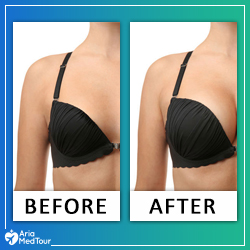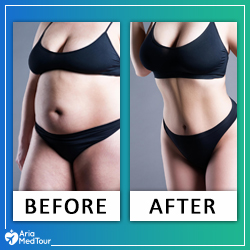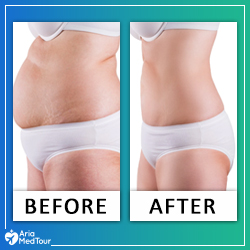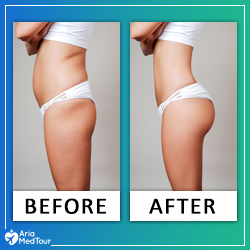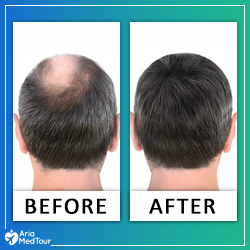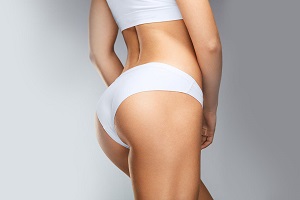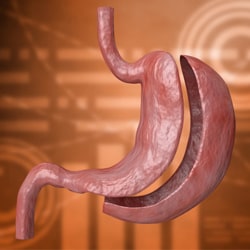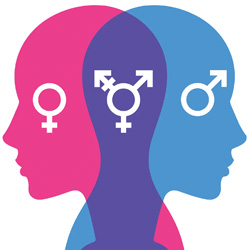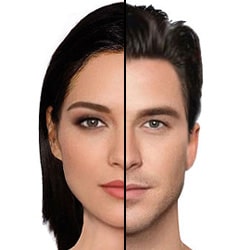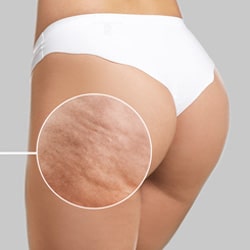Have you ever felt a sudden back pain when you wanted to stand up or to pick something up from the floor? This pain that radiates through your back stems from a slipped or herniated disc.
This article aims to expound on exercises/activities you should do or avoid if you are suffering from back pain caused by a herniated disc.
Have you ever felt a sudden back pain when you wanted to stand up or to pick something up from the floor? This pain that radiates through your back stems from a slipped or herniated disc.
This article aims to expound on exercises/activities you should do or avoid if you are suffering from back pain caused by a herniated disc. Watch the video below and then keep on watching to get a grasp on the details.
What is a herniated disc?
Your spine comprises 24 individual small bones called vertebrae. These bones are stacked on top of each other with three c-shaped curves that help you to keep your balance.
Vertebrae are cushioned by round, pillow-shaped, and soft substances known as discs, which act as elastic pivots to absorb any shocks, to allow movements in any directions, and to provide balance and stability in the body.
Herniated disc (also slipped disc) happens when the jelly-like center of the disc (nucleus) starts pushing against its outer layer named annulus due to tears or rupture of the annulus (disc degeneration). Such a fragment can lead to pain, numbness, and weakness in limbs by irritating the nearby nerves. This situation is usually caused by aging and sustained stress imposed on your spine.

Herniated discs could cause back pain as well as irritating nearby nerves in an arm or leg.
The lower part of your backbone and your neck are more prone to such spinal fragmentation; however, other parts of your spine are not immune against injuries.
Although about 80 percent of people experience painful herniated disc or have disc symptoms, you can steer clear of it by non-surgical treatments, including doing certain exercises and avoiding certain activities.
Back pain self-care – What to do?
First of all, you should consider consulting with a specialist about your pain and the condition of your slipped disc. Then, there’s plenty of things you can do to ease your pain caused by disc herniation. Below, we list some of the most effective ones:
Medications
To alleviate the pain and reduce the inflammation of your disc, doctors prescribe certain medications. They include ibuprofen, acetaminophen, naproxen, and codeine.
Applying a hot or cold compress
As you start feeling a sharp pain in your lower back, you can apply a cold compress on the area for a few minutes. You can do this 3 to 4 times a day. If not relieved, you can switch to hot packs after a few days.
Sleeping and resting
Although it’s well-reasoned to dedicate some time to have a rest when you’re feeling back pain, it is imperative that you maintain a certain amount of activity during the day.
Also, you should be cautious about your sleeping position in order not to worsen your pain. Depending on your condition, it’s safe to sleep either on the stomach or on your side.
For disc degeneration leading to back pain, use a firm mattress and flat pillows and sleep on your stomach. You can also sleep on your back, while putting a pillow under your head and shoulder so that your upper body is elevated. Put a pillow under your knees for added support.
If you have a disc herniation, sleeping on your stomach can be a good option. However, some people do not find this position very comfortable. They can try to sleep on their side in a fetal position, instead.
Exercising
There are some physical activities like yoga, swimming, and walking which reduce back pain. Also, certain exercises are recommended to patients with a slipped disc. Below items are safe exercises for a herniated disc:
Cobra pose stretch
- Lie down on your stomach
- Position your arms on the floor just below your shoulders and prop your upper side of body up with your arms while keeping your hips stuck to the floor. You can do this first with bent arms (forearms kept on the floor), which is called half cobra pose, and then progress to full cobra pose (arms fully stretched when lifting your upper body).
- Hold the position for 15 seconds, take a short rest and do it again.
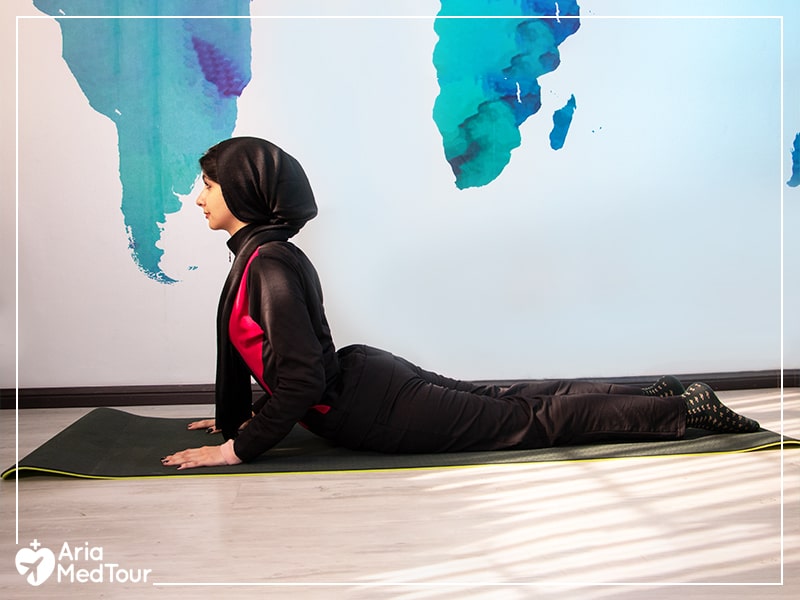
Cobra pose is an effective way to boost the flexibility of your spine.
Wall sits
- Position your back flat against the wall.
- Set your feet shoulder-width apart and about 2 feet from the wall.
- Slide your back slowly down the wall until your thighs are parallel to the ground.
- Tighten your abs and hold the position for 20 to 60 seconds. You should feel a burn in your thigh muscles.
- Return to the starting point and rest for 30 seconds.
- Repeat the exercise.

Wall-sit is an excellent exercise to strengthen the hip and the quadriceps muscles.
Bird dog
- Kneel on the floor with your knees hip-width apart and your palms firmly positioned on the floor.
- Tighten your abs and raise your right (or left) arm and at the same time, lift the opposite leg back so that they are aligned to your torso (parallel to the floor).
- Keep your back and pelvis straight during the exercise.
- Hold the position for 3 or 4 seconds and slowly return to your starting position.
- Repeat the process with the other hand and leg.

Bird dog exercise engages both the core and back muscles at the same time, building low back function.
Bridging
- Lie down on your back and keep your arms at your side with palms toward the floor and knees bent.
- Lift your hips until your shoulders, knees, and hips make a straight line.
- Squeeze your core and tighten your abs during the exercise.
- Hold the position for 2 minutes and gently lower yourself down.
- Repeat this exercise 3 to 5 times per day.

Bridging can enhance your core stability.
Activities to avoid with a herniated disc
- Doing laundry
Doing laundry involves bending down, lifting clothes, carrying the heavy basket of clothes and hanging them. All of these movements apply tremendous pressure on your lower back; however, you can reduce the pressure by:
- Asking a friend or family member to help you with the task
- Going for dry cleaners offering laundry services
- Avoiding sudden twisting movements when doing the laundry
- Breaking up the load and doing it in small bundles
- Vacuuming
- Vacuuming is one of the most harmful household chores for your back because the repetitive twisting of your back while vacuuming and the bending over posture can worsen your back pain. Slouching or keeping your back rigidly straight while vacuuming can also be damaging positions that aggravate disc herniation. To have a suitable body mechanism, take the following recommendations into account while vacuuming:
- Avoid awkward and sudden twisting movements
- Avoid overstretching and trying to reach hard-to-access corners
- Use both hands to hold the vacuum cleaner handle and keep your back stable and in a comfortable position
- If you do not like to use both of your hands, switch your arms and legs from time to time. You can put your non-vacuuming hand on your thigh to lessen some of the imposed weight and pressure from your back.
- Driving
Maintaining a prolonged sitting posture when you drive for long hours should be avoided if you have a herniated disc. Driving also causes constant whole-body vibration, which can exacerbate your back pain.
- Smoking
Any tobacco products could make a herniated disc worse by decreasing oxygen supply to the disc, leading to rapid spinal degeneration.
- Improper lifting
If you want to lift any objects, avoid bending over and using your back muscles.
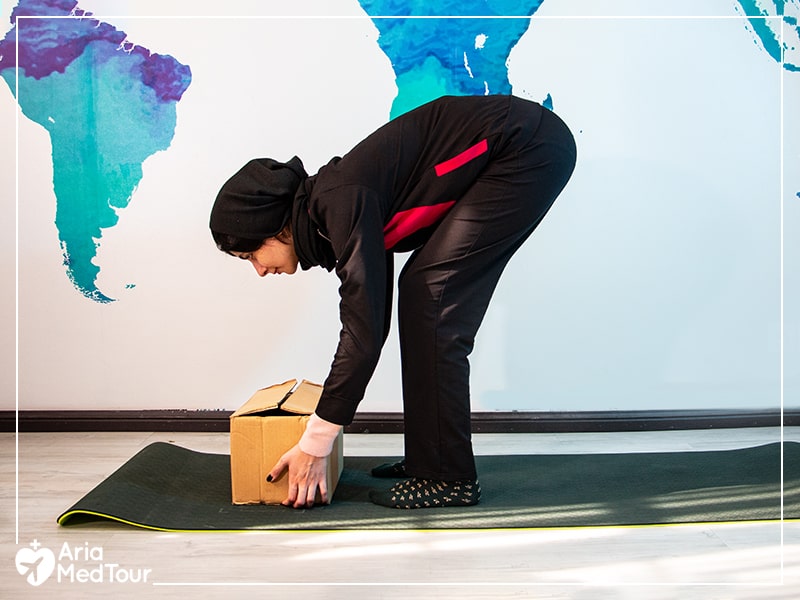
DON’T DO THIS!
Instead, bend your knees and use the strength of your leg or thigh muscles while keeping your back straight.
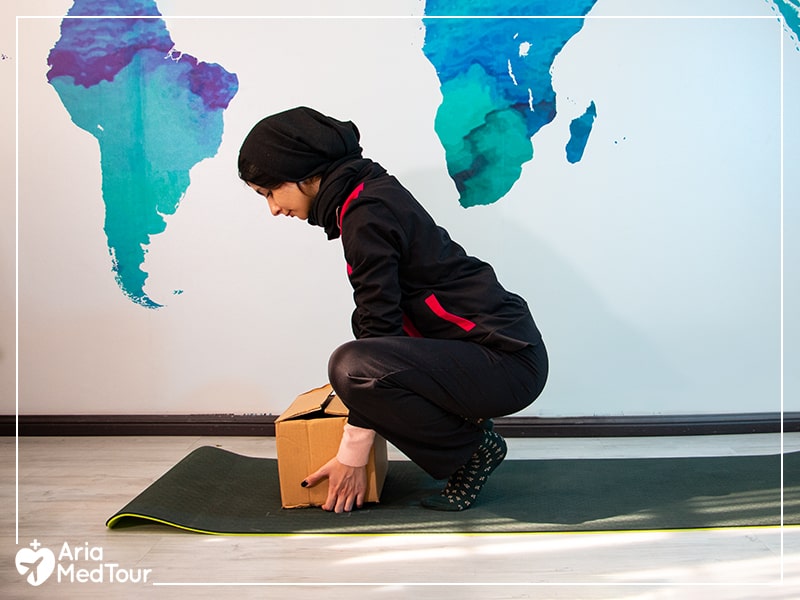
DO THIS!
- Sitting on a couch or soft sofa
Although sitting on a soft sofa makes you feel comfortable, it potentially puts too much stress on your spinal disc because people like to slouch when sitting on a couch. Contrary to common knowledge, your spinal disc gets more rest when you are standing rather than sitting. If you want to sit, use a firm, non-reclining, and straight chair.
Exercises to avoid with a herniated disc
Exercising and stretching are among the recommended solutions to your back pain. However, there are some workouts and activities that are not only useless but also put massive pressure on your disc. Therefore, people with herniated disc should avoid the following exercises:
- Crunches & sit-ups
Although these well-known workouts present a set of benefits, including giving you a slimmer waist and a firm abdomen, they can be bad for a person with low back pain. These exercises put stress on the discs and vertebrae of the spine by pushing the curved spine on the floor and placing a massive strain on your lower back muscles. They also can accelerate the wear and tear of the annulus and irritate your disc.
- Straight leg lifts
Although this workout is usually recommended after hip or knee replacement surgery, you should avoid doing this exercise if you are suffering from low back pain as this movement places a similar strain on your spinal columns as sit-ups do.
- Standing hamstring stretch
If you want to relieve the chronic low back pain, avoid forward bending stretches like touching the toes and standing hamstring stretches. These exercises will take a toll on your spine and would potentially aggravate your herniated disc.
- Squats
Just like heavy lifting, squats put too much stress on your lower back as this area burden your entire weight during the squats.
- Cycling
Cycling is among the exercises that require forward flexion. When cycling, you naturally hunch forward and the position could cause damages to your lumbar herniated disc.
Other things that can worsen your herniated disc
- Obesity
Based on medical research conducted by Hong Kong University, obesity is one of the leading causes of degenerative disc diseases. If you’re suffering from back pain caused by disc herniation or degenerative disc disease and you are obese at the same time, you should consider a weight loss program to shed some of the extra pounds.
- Inflammatory foods
Eating foods that cause inflammation can make your back pain worse. Those who are suffering from back pain need to adjust their diet by cutting back of inflammatory foods and instead eat more anti-inflammatory foods. In the following, we have listed some foods you need to avoid when suffering from back pain:
- Sugary foods
- Refined grains such as Pizza, cereal, and white bread. Refined bread increases the amount of insulin in your body
- Red meat: red meat contains a substance called neu5gc which could cause inflammation.
Some examples of foods with anti-inflammatory properties are salmon, carrot, red grapes, nuts, green tea, sweet potato and so on.
Last word
All in all, you can quickly alleviate your back pain by following the above-mentioned tips without undergoing surgery. It does not matter you have to do the laundry, vacuum the house, mop the floor, feed your pet, exercise, or drive, you should always take care of your spine by doing them right or not doing them at all.
Besides, avoid putting a considerable load on your back; instead, use the power of your legs. Try to exercise gently and in a controlled way, especially when you are bending over or lifting weights.
If you have been following all the dos and don’ts of disc herniation management but still can’t put up with your back pain, a herniated disc surgery is the last solution. For a free consultation with one of our top-rated specialists, you can simply contact us.


